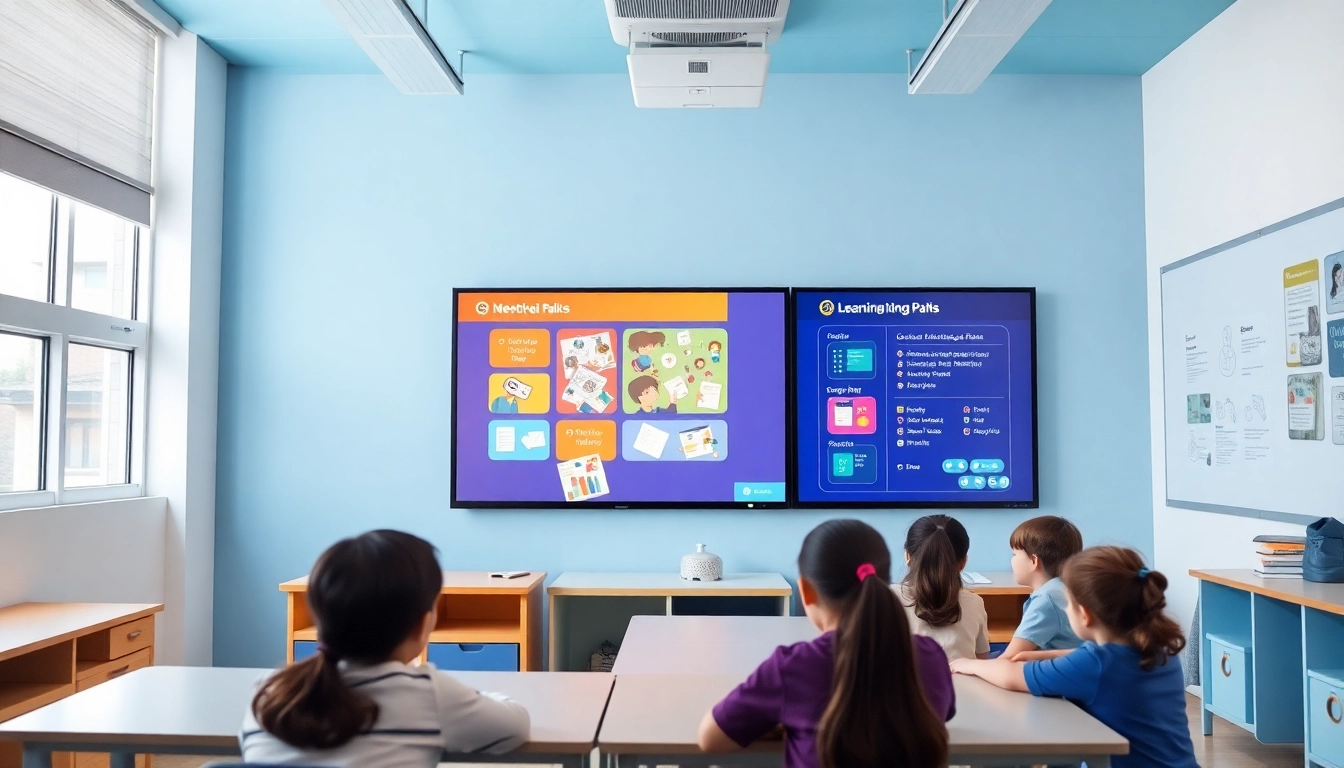Revolutionize Education with a Personalized Learning Platform That Saves Time and Engages Learners
Understanding Personalized Learning Platforms and Their Transformative Role in Education
What is a Personalized Learning Platform?
In the rapidly evolving landscape of education, a personalized learning platform represents an innovative software solution designed to tailor educational experiences to individual learners’ needs, preferences, and abilities. Unlike traditional one-size-fits-all curricula, these platforms utilize advanced technologies such as Artificial Intelligence (AI), machine learning, and data analytics to create dynamic, adaptive learning pathways. They enable educators and learners alike to engage in a more meaningful, efficient, and effective educational process by offering content, assessments, and activities calibrated to each student’s unique learning style—whether visual, auditory, kinesthetic, or a combination thereof.
Recent advancements and insights from industry leaders highlight how AI-powered solutions are pushing the boundaries of personalization at scale. Platforms like PowerSchool, Cerego, Degreed, and Disco are integrating AI to assist in curriculum design, automate assessment scoring, and generate insights that fine-tune learning experiences. As a result, a well-designed personalized learning platform transforms the educational ecosystem by fostering engagement, improving retention, and accelerating skill acquisition, thus significantly impacting student success rates.
Key Features of Leading Personalized Learning Tools
Effective personalized learning platforms share several core features that set them apart. These include:
- Adaptive Content Delivery: Content dynamically adjusts to the learner’s progress, difficulties, and preferences. For example, if a student struggles with a concept, the platform can present additional explanations or alternative formats such as videos or interactive simulations.
- Intelligent Assessments: Quizzes and assessments that adapt in real-time, providing immediate feedback and tailored next steps. They help identify knowledge gaps and recommend specific learning activities.
- Data-Driven Insights and Analytics: Platforms collect extensive data on engagement, assessment performance, and progression, offering actionable insights for educators to optimize instruction.
- Content Customization & Remixing: Educators can easily create, modify, and remix lessons, quizzes, and multimedia resources to match learner needs, fostering creativity and reuse of effective materials.
- Multimodal Learning Support: Incorporation of visual, auditory, and kinesthetic learning materials ensures accessibility and caters to diverse learning styles.
- Community and Collaboration Tools: Platforms often feature spaces for educators and content creators to share best practices, co-develop content, and support peer learning within a vibrant community.
Benefits for Educators and Learners
The adoption of a personalized learning platform confers substantial advantages for both educators and students.
For Educators
- Streamlined Content Creation: Simplifies the process of designing engaging, tailored lessons without extensive technical expertise, allowing educators to save hours on content development.
- Enhanced Data Visibility: Access to real-time analytics helps identify struggling students early, enabling targeted interventions.
- Scalable Personalization: Ability to provide customized learning paths at scale, ensuring that all students receive attention aligned with their individual needs without increasing workload.
- Community Engagement: Connect with fellow educators and content creators to exchange ideas, co-create resources, and elevate instructional quality.
For Learners
- Increased Engagement: Dynamic, varied content that adapts to learner preferences reduces boredom and sustains motivation.
- Improved Outcomes: Personalized pathways foster better understanding and retention, resulting in higher achievement levels.
- Flexibility and Accessibility: Learners can access tailored content anytime and from anywhere, accommodating different schedules and learning environments.
- Fostering Autonomy: Offers learners control over their learning journey, boosting self-regulation and confidence.
Designing Effective Personalized Content at Scale
Creating Dynamic Lessons, Quizzes, and Assessments
Creating compelling and adaptable educational content involves leveraging the powerful features of platforms like Mexty, which allow educators to craft lessons that are not only engaging but also responsive. Using intuitive drag-and-drop interfaces, educators can develop multimedia-rich lessons, including videos, interactive simulations, and embedded quizzes. These elements can be programmed to respond to learner interactions, providing immediate feedback or branching pathways based on responses.
For example, a language teacher can create a vocabulary lesson where incorrect answers lead the student to review specific grammar points, while correct responses unlock more advanced tasks. This level of interactivity ensures that each student receives the right challenge at the right time, boosting confidence and mastery.
Implementing Customization Without Extra Work
The secret to scaling personalization lies in automation. Platforms like Mexty enable educators to set up templates and reuse content with minimal modifications—saving time while maintaining a personalized experience. Features such as AI-driven content recommendation engines analyze learner data and suggest appropriate next steps or supplementary materials. This proactive approach helps in managing large classes or cohorts effectively, ensuring every learner’s needs are addressed without increasing instructor workload.
Using Data to Enhance Student Engagement
Data analytics play a crucial role in refining personalized learning strategies. By monitoring how students interact with content, instructors can identify patterns—such as topics where students typically struggle or disengage. These insights inform targeted revisions and the creation of supplemental resources. For instance, if data reveals a particular concept is repeatedly misunderstood, educators can design engaging explainer videos or interactive exercises to reinforce understanding. This iterative process fosters continuous improvement and higher engagement levels across diverse learner populations.
Best Practices for Using a Personalized Learning Platform
Aligning Content with Learner Needs
Successful implementation begins with understanding your learners. Conduct thorough needs assessments and gather data on prior knowledge, learning preferences, and goals. Use this information to tailor content that resonates with learners’ interests and cultural backgrounds, thereby increasing relevance and motivation. Regularly update and adapt content based on ongoing assessment data to maintain alignment with evolving learner profiles.
Fostering a Collaborative Creative Community
Building a vibrant community of educators and content creators is essential for sustained innovation. Encourage sharing best practices, remixing existing content, and co-developing new materials within platforms like Mexty. Leveraging community feedback, peer reviews, and collaborative projects accelerates content quality and diversity, ensuring that educators stay inspired and learners receive rich, varied educational experiences.
Measuring Success and Improving Outcomes
Establish clear metrics such as assessment scores, engagement rates, and skill mastery benchmarks to evaluate the effectiveness of personalization strategies. Use analytics dashboards to monitor progress and identify areas for improvement. Implement iterative cycles—test, analyze, refine—to incrementally enhance content relevance and learner success. Align these metrics with broader institutional goals to demonstrate impact and justify continued investment.
Overcoming Challenges in Personalized Education
Balancing Personalization with Standardization
While personalization is key, educators must ensure that core curricula and standards are maintained. Achieving this balance requires designing flexible modules that align with learning objectives but allow customization. Using modular content enables adherence to standards while providing room for individual tailoring.
Ensuring Accessibility and Inclusivity
Effective personalized platforms prioritize accessibility, accommodating diverse learners, including those with disabilities. Incorporate features such as text-to-speech, adjustable font sizes, and multilingual support. Maintain compliance with accessibility standards like WCAG to ensure equitable learning opportunities.
Managing Workload and Technology Integration
Leverage automation tools like AI content recommendations and analytics to reduce manual effort. Provide training and technical support to educators to streamline adoption. Establish clear workflows for content creation, assessment analysis, and feedback to integrate seamlessly into existing educational practices.
Case Studies and Future Trends in Personalized Learning
Real-world Examples of Successful Implementation
Leading educational institutions have harnessed platforms like Mexty to transform their teaching methods. For instance, a university integrated a personalized learning system that tailored coursework, leading to a 25% increase in passing rates and improved student engagement scores. K-12 schools implementing adaptive quizzes saw notable reductions in dropout rates and higher standardized test scores.
Emerging Technologies and Innovations
The future of personalized learning is driven by innovations such as AI-powered chatbots for student support, virtual reality environments for immersive learning experiences, and advanced analytics for predictive intervention. Blockchain-based credentialing and micro-credential systems will further support lifelong, personalized upskilling.
Strategies for Staying Ahead in Education Technology
To stay competitive, educators and institutions should adopt continuous professional development, invest in emerging tools, and foster a culture of innovation. Emphasize data literacy and experimentation with new pedagogies to leverage the fullest potential of personalized learning platforms, ensuring that teaching remains responsive and progressive.



